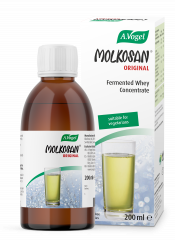What are fermented foods?
Fermented foods have been around since ancient times and traditionally, it was a common way to preserve foods. However, nowadays we’ve become a little lazy, we rely on our fridges and freezers to preserve our food instead and have fallen away from the tradition of fermenting foods. However, this also means we may be missing out on the crucial health benefits that these processes offer too!
Lactic acid producing bacteria (LAB) are key to the fermentation process. See, a number of foods contain naturally occurring LAB, for example on the skins of fruit and vegetables. By allowing LAB to multiply (by carefully creating the correct conditions) they are able to firstly produce lactic acid, which helps to lower the pH of the product and act as a preservative. Then, together with the lowering pH and increasing numbers of LAB, the bad bacteria are kept in check as these good guys thrive.
Why all the hype – why are they so good for us?
Fermented foods are so special because they help support the balance of bacteria in our gut. Our gut contains naturally occurring bacteria – billions and billions of them. These bacteria help support the metabolism of sugars and starches in our gut, and are thought to exert positive effects, not only in the gut, but also elsewhere around the body – they are thought to have effects on everything from our mood, to our immune functions and even weight management! In conditions such as IBS (which as we know is associated with a whole host of horrible symptoms including bloating, flatulence, and diarrhoea), dysbiosis, or an imbalance in gut bacteria, is thought to play a major role. So, by supporting your gut bacteria you could well see some positive improvements!
Then, not only does our good gut bacteria have all these direct benefits, but actually, they also help to make nutrients more accessible from the food we eat. See, the bacteria work by gently metabolising the sugars and starches in the food we eat and turn them into lactic acid. By gently breaking down some of the tougher carbohydrate matrixes in the food, they actually unlock some of the nutrients which allows for better absorption – neat!
What are the different types of fermented foods?
Dairy products or vegetables are often subject to fermentation as they contain naturally occurring lactic acid bacteria, although, in some cases, a little extra is added just to help the process along a bit but they make great fermenting agents! Some warmth (often room temperature is sufficient) is also a common feature of these methods.
So now we have an idea of the process and the proposed benefits, now I run through some popular choices when it comes to fermented foods. You may even be tempted to try some, or perhaps you’ll find you already have without even realising! Remember many of these are often available in local health food stores or, if you’re feeling adventurous, why not make your own at home.
Fermented dairy options
Yoghurt

Yoghurt is a popular, readily consumed food, but did you know it was fermented? Yoghurt is made by fermenting milk which is gently heated in order to allow the LAB to multiply and convert the milk sugar – lactose, into lactic acid as they go – hence the mild, sour taste of yoghurt.
Kefir

Kefir can be described as a super-charged, drinkable yoghurt. Made by fermenting milk with kefir grains, it contains an extra dose of live bacteria. Once the fermentation process is complete, the kefir grains are strained off leaving a tangy, slightly fizzy milky drink.
Fermented vegetables
Sauerkraut

Perhaps one of the most well known fermented products, sauerkraut is made from fermented cabbage. Typically white cabbage enhanced with some salt (another natural preservative to help fend off any bad bacteria), and sometimes some mild spices or fruit. The end product is often delightfully tangy and enriched with LAB – great for your gut!
Kimchi

Originating from Korea, kimchi is similar to sauerkraut and is typically made from salted and fermented cabbage and other vegetables such as radish. It generally packs a bigger punch than regular old sauerkraut and is typically enhanced with stronger flavours such as garlic, ginger and chilli.
Natto

Natto is fermented soy beans and quite a delicacy in Japan. With a stringy texture and acquired tastes it’s not to everyones’ taste, but the supposed health benefits are quite impressive, so it might just be worth a try!
Miso

A traditional Japanese seasoning, miso is a paste made from fermented soy beans. The soybeans are often fermented with some salt, a type of fungus called koji which acts as a starter culture, and sometimes some other grains are added. Different variations of miso such as red or white depend on if the beans are initially steamed or boiled and what other ingredients are added.
Tempeh

This time originating from Indonesia, Tempeh is another variant of fermented soy beans, this time the beans are binded and packed tightly into a dense consistency which can then be sliced up
Pickles, chutneys and more – Generally, vegetables are good fermenting agents which is why a variety of ingredients can be used from cabbage to some peppery radish or pickled cucumber. Below I show you how to make a delicious, tangy fermented tomato ketchup. It really is delicious, it’s food for your gut and it can be used as a healthier condiment or as a rich base in heartier dishes.
Drinks
Kombucha

For all you tea lovers out there – you might want to try this – a healthier, fermented version called kombucha. Originating in China, kombucha is black or green tea which has been gently fermented. Sugar is added to the fermenting mix initially along with some bacteria and fungi which naturally convert the sugars into more beneficial agents. Along the way some natural gases are released which give this beverage a very slightly, fizzy texture.
Fermented vegetable juices
Vegetable juices fermented with the lactic acid producing bacteria (LAB) are the perfect addition to your digestion-boosting regime. The bacteria help to convert the natural sugars in the juice into L+ lactic acid. This acts as a natural preservative so lots of added extras aren't required, but it also helps to support your interal gut environment too! Not to mention, they are super tasty and nutritious! Why not browse the Biotta range with 7 tasty varieties available.







 Hello. My name is Alison Cullen and I am an experienced nutritional therapist with a clinic in Ayrshire, Scotland. I currently combine running my clinic with the role of Education Manager for A Vogel. I lecture, train and write extensively on health issues, which I find endlessly fascinating.
Hello. My name is Alison Cullen and I am an experienced nutritional therapist with a clinic in Ayrshire, Scotland. I currently combine running my clinic with the role of Education Manager for A Vogel. I lecture, train and write extensively on health issues, which I find endlessly fascinating.

